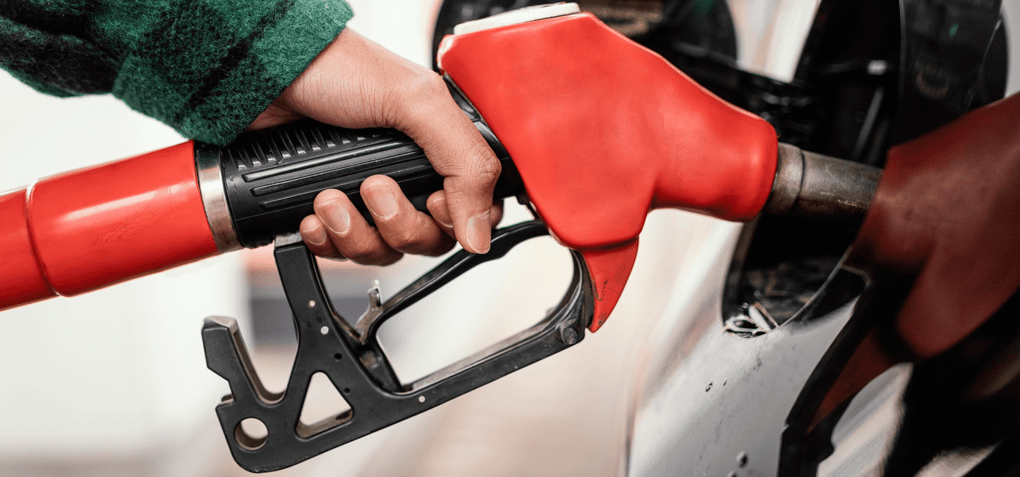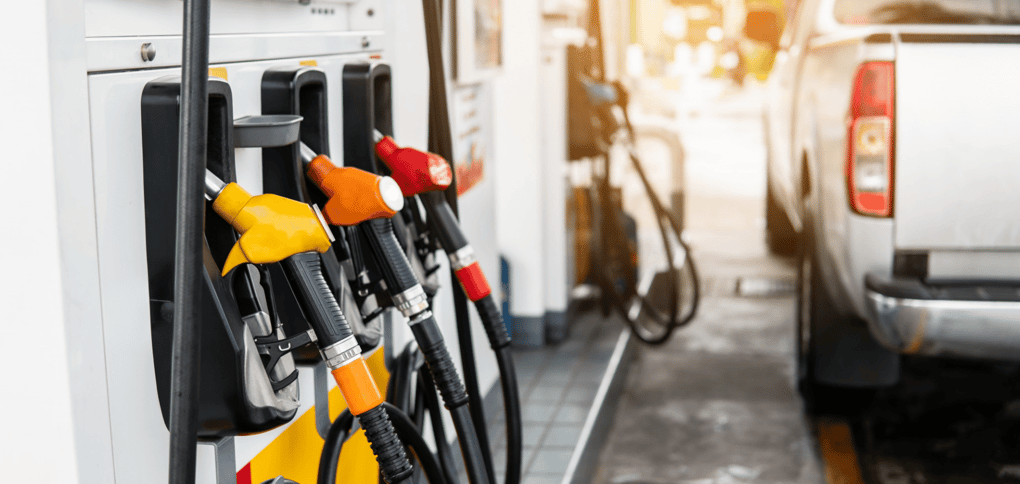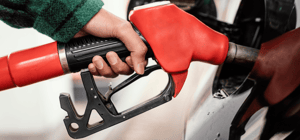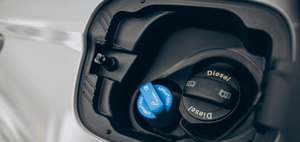Compare cheap breakdown cover
✔ Local, nationwide and European cover options
✔ Compare prices and choose the right policy for you
✔ Cover for cars, vans and motorbikes and scooters

When looking to purchase a new car, it’s crucial to take into account its MPG or miles per gallon. MPG determines how many miles a car can travel on a gallon of fuel. This article examines the calculation of a car’s MPG and provides tips on how to increase fuel efficiency.
- What does MPG mean?
- What affects MPG?
- How is MPG calculated?
- Official MPG vs True MPG?
- How can I work out my car’s MPG?
- What is a good MPG?
- What does l/100km mean?
- Will my car’s MPG change as it gets older?
- How can I improve my car’s MPG?
- Frequently asked questions
What does MPG mean?
MPG is an abbreviation for miles per gallon, which represents the number of miles that a vehicle can travel with a single gallon of fuel. For instance, if your car has an MPG of 60, you can cover 60 miles on a gallon of fuel.
MPG is a crucial factor to consider when purchasing a car as it directly relates to fuel efficiency. The higher the MPG, the more efficient your car is, and the less fuel you’ll need to cover the same distance, which in turn saves you money. Additionally, having a car with a good MPG rating can reduce running costs and lower road tax fees.
It is essential to note that the official MPG figures advertised by manufacturers are calculated in ideal conditions and laboratory environments. Therefore, they don’t necessarily reflect the real-world fuel economy of a vehicle. However, they serve as a useful benchmark to compare different cars and their fuel efficiency.
Furthermore, several factors can influence a car’s actual MPG performance, such as driving style, road conditions, and vehicle maintenance. Aggressive acceleration, driving at high speeds, and carrying excess weight can all reduce your car’s MPG.
On the other hand, maintaining proper tyre pressure, regular servicing, and driving at a steady pace can improve your car’s fuel efficiency and increase its MPG.
Compare cheap breakdown cover
What affects MPG?
Several factors can impact a car’s MPG, including its size, engine size, fuel type, and the presence of fuel-saving technology such as stop/start engines.
The size of the car and the engine size are two crucial factors that can affect its fuel economy. Smaller cars with smaller engines usually have better fuel consumption than larger ones. Diesel engines can also have better fuel consumption than petrol engines, especially on longer journeys.
However, the way you drive your car can also significantly affect its fuel economy. For instance, if you drive a large diesel-engine car for only a few miles each day around town, your fuel economy won’t be as efficient as it would be if you were driving longer journeys on the motorway.
Weight is another essential factor to consider when it comes to MPG. Overloading your car with extra baggage can lower its fuel efficiency. Even fitting optional larger wheels can have an impact, as the extra weight can cause more friction and drag when you drive.
Other factors that can affect MPG include the type of roads you drive on, traffic conditions, and vehicle maintenance. Driving on hilly roads, for example, can reduce your car’s fuel efficiency as it requires more energy to climb uphill. Heavy traffic conditions can also have a similar impact, as constant braking and accelerating can use up more fuel.
Regular vehicle maintenance is also crucial for optimal fuel economy. Poorly maintained cars with dirty air filters, worn-out spark plugs, and low tire pressure can cause your car to consume more fuel than necessary, leading to a lower MPG.

How is MPG calculated?
Official MPG figures, as seen in new car brochures, are calculated using the World Harmonised Light-duty Vehicle Test (WLTP). Introduced in 2017, the new WLTP test provides a more accurate measure of a vehicle’s fuel economy in real-world conditions.
The WLTP test comprises various scenarios that evaluate a car’s performance on different types of roads, such as main roads, cities, towns, rural roads, and long stretches of motorway. The results of these tests are then combined to produce a comprehensive MPG figure.
Unlike the old NEDC test, which was used for several decades, the WLTP test is designed to provide a more accurate reflection of a car’s fuel efficiency. It factors in the impact of features such as air conditioning, and it also takes into account a car’s optional extras and additional equipment, which can impact fuel economy.
To calculate the MPG of your own car, you can use a simple formula: divide the total number of miles travelled by the total amount of fuel used. For example, if you travelled 300 miles and used 10 gallons of fuel, your MPG would be 30 miles per gallon.
It’s important to note that this calculation only provides a rough estimate and may not account for the impact of various factors such as driving style, terrain, and traffic conditions.
Compare cheap breakdown cover
Official MPG vs True MPG?
The MPG figures advertised by manufacturers in their official brochures are often higher than the actual fuel economy achieved in real-world conditions. Even the most efficient vehicles are likely to have lower true MPG figures than the official estimates.
This is because the WLTP tests that produce the official MPG figures are conducted in laboratory conditions and don’t necessarily reflect real-world driving scenarios. The engine is not subjected to the same stress and demands as it would be in normal driving conditions, resulting in higher MPG figures. Therefore, the advertised MPG figures should be viewed as an approximation rather than an absolute indicator of a car’s fuel efficiency.
Moreover, official MPG figures are based on ideal driving conditions, including sensible driving and staying within national speed limits. However, in reality, factors such as traffic, terrain, and driving style can significantly impact fuel economy.
For instance, driving at high speeds or in heavy traffic can reduce your car’s MPG. Similarly, harsh acceleration, braking, and driving with underinflated tyres can all affect fuel efficiency.
To get a more accurate representation of a car’s true MPG, independent organisations such as What Car? and Honest John have developed “True MPG” tests.
These tests use real-world driving scenarios and take into account various factors such as speed, road conditions, and weather to produce a more realistic estimate of a car’s fuel economy.
How can I work out my car’s MPG?
Calculating your car’s MPG can be a helpful way to keep track of your fuel consumption and expenses. However, estimating MPG can be influenced by various factors such as weather conditions, road type, and engine size. In general, more powerful cars tend to have lower MPG ratings.
One simple way to calculate your car’s MPG is to use its odometer, which displays the distance travelled. When you fill-up your car’s empty or nearly empty tank, reset the odometer to zero, then keep track of the number of miles you can travel on a full tank of fuel. Once you have travelled a reasonable distance, say 200 miles or more, fill up your tank again and record the amount of fuel used.
To calculate your car’s MPG, divide the distance travelled by the amount of fuel used. For example, if you travelled 200 miles and used 10 gallons of fuel, your MPG would be 20 miles per gallon.
Keep in mind that this method provides only an estimate of your car’s fuel efficiency and may not account for factors such as driving style and traffic conditions.
To get a more accurate estimate of your car’s MPG, you can use various smartphone apps or dedicated fuel-economy devices that use GPS to track your driving habits and provide real-time MPG data.
Additionally, some newer cars come equipped with onboard computers that display real-time fuel consumption and average MPG. These tools can help you monitor your driving habits and identify areas where you can improve fuel efficiency.
Compare cheap breakdown cover
What is a good MPG?
A good MPG rating for a car typically falls within the range of 50-60 MPG. This range is indicative of a car’s fuel efficiency, with lower running costs and reduced road tax fees. In addition, some cars with higher MPG ratings may also have cheaper insurance premiums.
However, the ideal MPG rating for a car ultimately depends on its size, engine size, and the type of driving it’s primarily used for. For example, a small city car that’s only used for commuting short distances may have a higher MPG rating than a larger car used for longer journeys.
It’s worth noting that some cars can achieve exceptionally high MPG ratings. The Peugeot 208 1.5 is one such car, boasting an impressive 76.3 MPG rating. In contrast, luxury sports cars such as the Bugatti Chiron have a much lower MPG rating of only 11 MPG.
Despite the higher running costs of prestige car brands such as Bugatti, Lamborghini, and Ferrari, their owners are unlikely to prioritise MPG and fuel efficiency. However, for the average car owner, a good MPG rating is a significant factor to consider when selecting a car, as it can lead to significant savings over time.

What does l/100km mean?
In some countries, fuel efficiency is measured in litres per 100km, unlike the UK where it is measured in miles per gallon. The measure indicates the amount of fuel a car will use after travelling 100km. For example, a car with a fuel efficiency rating of 6 litres per 100km will use six litres of fuel to cover a distance of 100km.
To convert litres per 100km to MPG, you can divide the value by 282.5. For instance, a car that has a fuel efficiency rating of 7 litres per 100km would be equivalent to 33.12 MPG (7 divided by 282.5). In general, the higher the MPG and the lower the litres per 100km, the more fuel-efficient a car is considered. This information can be helpful when comparing cars and selecting a fuel-efficient model.
How much can you save on your car insurance?
How do I convert MPG into MPL?
Converting MPG to MPL can be a helpful way to measure fuel efficiency if you’re used to working with litres. Since petrol and diesel are sold in litres in the UK, it may be more practical to measure fuel efficiency in miles per litre (MPL) rather than miles per gallon (MPG).
To convert MPG to MPL, divide the MPG figure by 4.54. For example, if your car has an MPG rating of 50, its MPL rating would be 11.02 (50 divided by 4.54). This conversion can be useful for comparing fuel efficiency between different cars or calculating fuel costs in litres.
It’s worth noting that while MPL and MPG are different ways of measuring fuel efficiency, they both provide a similar indication of how much fuel a car uses to travel a certain distance. It’s also important to keep in mind that the conversion factor may vary depending on the country or region you’re in, as fuel is sold in different units of measurement.
Will my car’s MPG change as it gets older?
The fuel efficiency of a car may decline over time due to factors such as wear and tear, ageing parts, and changes in driving conditions. However, regular servicing and proper maintenance can help prolong a car’s fuel efficiency and reduce the impact of these factors.
It’s important to note that the definition of a “fuel-efficient” car may change over time as technology advances. A car that was considered fuel-efficient ten years ago may not meet the same standard today. Therefore, if you’re in the market for a used car, it’s advisable to look for models that are relatively new and have a good MPG rating.
Aim for a car with an MPG rating of at least 40, which is considered a decent standard for fuel efficiency. However, keep in mind that the fuel efficiency of a car can be influenced by a range of factors such as driving style, traffic conditions, and maintenance history. Therefore, it’s important to conduct thorough research and seek professional advice before purchasing a used car.
How can I improve my car’s MPG?
Improving your car’s fuel efficiency can help you save money on fuel costs and reduce your carbon footprint. Here are some practical tips to boost your car’s MPG:
-
Keep your tyres inflated to the correct pressure. Underinflated tyres increase rolling resistance, which requires more energy and fuel to move the car. Check your car’s recommended tyre pressure in the owner’s manual and inflate the tyres regularly.
-
Remove unnecessary weight from your car. Extra weight, such as clutter in the boot, increases fuel consumption. Clear out the boot and remove any items that you don’t need to carry.
-
Change your driving habits. Avoid revving the engine, harsh braking, and quick acceleration. Driving smoothly and maintaining a consistent speed can help you save fuel.
-
Slow down on the motorway. Driving at high speeds increases wind resistance, which requires more energy and fuel to overcome. Slowing down by 10mph on the motorway can reduce your fuel consumption by up to 10%.
-
Avoid idling. If you’re stuck in traffic or waiting for someone, turn off the engine to save fuel.
Regular maintenance and servicing can also help improve your car’s fuel efficiency. Make sure to follow the manufacturer’s recommended maintenance schedule and use the recommended grade of motor oil. Replacing dirty air filters and faulty oxygen sensors can also improve your car’s fuel economy.
Frequently asked questions
Miles Per Gallon (MPG)
If you’re wondering what mpg is, it simply stands for miles per gallon
In the UK, fuel economy is measured in miles per gallon (MPG), which indicates the distance a car can travel on one gallon of fuel. A higher MPG rating means the car is more fuel-efficient, resulting in lower fuel costs.










